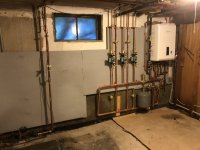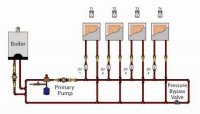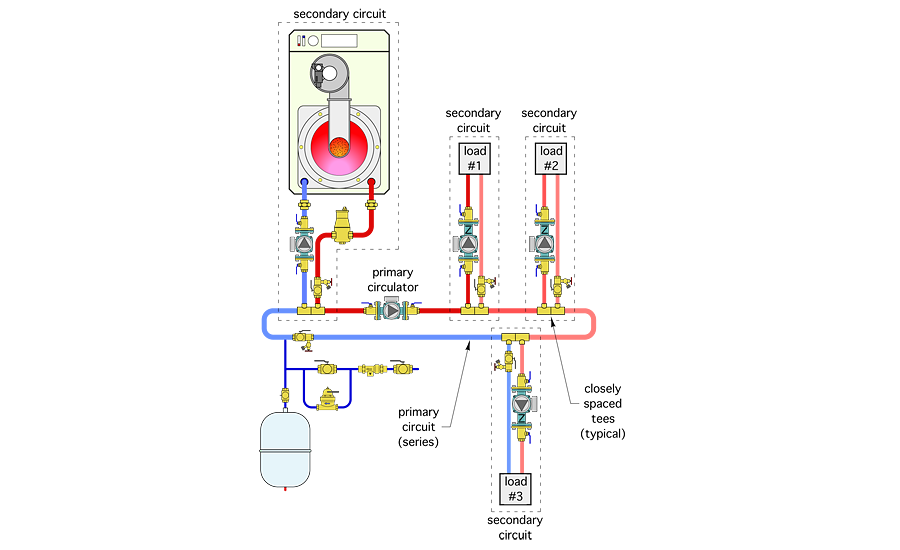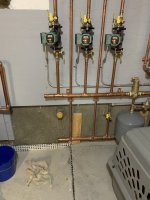Hi everyone, I completely replaced the heating system in a home I purchased last year, and am having some trouble when multiple zones are calling for heat. Its a 3 zone system, and the order of the zone take offs from the primary loop is 1,2,3, with 1 being basement/laundry, 2 is living area, and 3 is sleeping areas. If zone 1 calls for heat, then all of the hot water is being taken up by that zone, and same applies going down the line. This causes any zone further down the line than any zone calling for heat to get lower temp water, and not really heating.
The zone controller does have a priority capability to shut down zones 1&2 if zone 3 is calling for heat, but on really cold days, zone 3 may call for heat for extended periods leaving the other 2 zones shut down if I use the priority function, so not an optimal solution. I'm wondering if the primary loop design is wrong, and not allowing the zones to share the water sufficiently between the 3 zones, or if something else is going on. An image of the install is attached.
The zone controller does have a priority capability to shut down zones 1&2 if zone 3 is calling for heat, but on really cold days, zone 3 may call for heat for extended periods leaving the other 2 zones shut down if I use the priority function, so not an optimal solution. I'm wondering if the primary loop design is wrong, and not allowing the zones to share the water sufficiently between the 3 zones, or if something else is going on. An image of the install is attached.
Attachments
Last edited:




